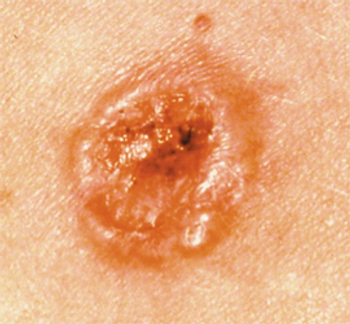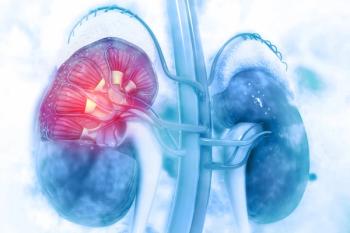
- ONCOLOGY Vol 16 No 11
- Volume 16
- Issue 11
High-Dose Interleukin-2 in Metastatic Disease: Renal Cell Carcinoma and Melanoma
Despite significant advances in the treatment of a variety of malignancies, highly effective therapies for most patients with metastatic renal cell carcinoma or metastatic melanoma are rare. Traditional oncologic treatment methods, such as
Despite significant advances in the treatment of avariety of malignancies, highly effective therapies for most patients withmetastatic renal cell carcinoma or metastatic melanoma are rare. Traditionaloncologic treatment methods, such as chemotherapy, surgery, and radiationtherapy, are marginally effective in these diseases, except in specialcircumstances.[1-3] Systemic immunotherapy with cytokines, such as interferonalfa (IFN-a, Intron A, Roferon-A) and interleukin 2(IL-2, Proleukin), produces the highest response rates (10% to 27% [renal cellcarcinoma] and 15% to 20% [melanoma]), but the search for more effectivetherapies continues.[2,4,5]
Efficacy of High-Dose IL-2
Since the first National Cancer Institute reports of the effectiveness ofhigh-dose IL-2 (administered as an IV bolus) and lymphokine-activated killer (LAK)cells in patients with advanced malignancies, research has focused onestablishing effective IL-2-based therapies, primarily for patients withmetastatic renal cell carcinoma and metastatic melanoma.[6,7] The addition ofLAK cells to high-dose IL-2 therapy was eventually abandoned, but high-dose IL-2therapy remains the treatment of choice for these two advanced malignancies,producing overall response rates of approximately 15%.[1,7,8]
The use of high-dose IL-2 therapy for metastatic renal cell carcinoma andmetastatic melanoma, however, is associated with significant toxicity, includinghypotension requiring vasopressor support, oliguria, pulmonary congestion,arrhythmias, and neurologic toxicity. To reduce toxicity and maintain or improveefficacy, researchers have investigated several other regimens, such as thoseusing lower IL-2 doses or alternative methods of administration (eg, continuousIV infusion, subcutaneous). Unfortunately, none of these alternative regimenshave proven superior to high-dose IL-2 therapy in patients with metastatic renalcell carcinoma or metastatic melanoma.[2,4] Additionally, combining IL-2 withIFN-a, chemotherapy agents, or both has notsignificantly improved the outcome in patients with metastatic renal cellcarcinoma.[7] In metastatic melanoma patients, the use of IL-2-basedbiochemotherapy has been quite promising, producing overall response rates ashigh as 64%, but recent preliminary data from a large, randomized, multicenterstudy comparing biochemotherapy with chemotherapy alone suggest thatbiochemotherapy is not significantly better than chemotherapy (M.B. Atkins, oralcommunication, June 2002).[2] Therefore, high-dose IL-2 therapy is likely toremain one of the most logical therapies for patients with metastatic renal cellcarcinoma and metastatic melanoma.
Review of Clinical Trials
The
Managing Toxicities
The
Future Directions
Because high-dose IL-2 therapy in metastatic renal cell carcinoma andmetastatic melanoma is effective but toxic, numerous clinical trials arecurrently evaluating IL-2 in combination with other agents, such as histamineand NG-monomethyl-L-arginine, to determine methods of enhancing efficacy andreducing toxicity.[4,9,10] The results of these trials are eagerly awaited.
I hope this supplement to ONCOLOGY provides useful informationregarding the use of high-dose IL-2 as treatment of metastatic renal cellcarcinoma and metastatic melanoma patients in your clinical practice. Forpatients with either of these diseases who are ineligible for high-dose IL-2therapy and for whom the prognosis is dismal, ongoing clinical trials, such astrials evaluating low-dose IL-2 in patients with organ dysfunction and a newformulation of IL-2 associated with reduced toxicity, may produce promisingresults.[5]
References:
1. Fyfe G, Fisher RI, Rosenberg SA, et al: Results of treatment of 255patients with metastatic renal cell carcinoma who received high-dose recombinantinterleukin-2 therapy. J Clin Oncol 13:668-696, 1995.
2. O’Day SJ, Kim CJ, Reintgen DS: Metastatic melanoma: chemotherapy tobiochemotherapy. Cancer Control 9:31-38, 2002.
3. Sun W, Schuchter LM: Metastatic melanoma. Current Treat Options Oncol1:193-202, 2001.
4. Glaspy JA: Therapeutic options in the management of renal cell carcinoma.Semin Oncol 29(suppl 7):41-46, 2002.
5. Dutcher J, Atkins MB, Margolin K, et al: Kidney cancer: the CytokineWorking Group experience (1986-2001): part II. Management of IL-2 toxicity andstudies with other cytokines. Med Oncol 18:209-219, 2001.
6. Rosenberg SA, Lotze MT, Muul L, et al: Observations on the systemicadministration of autologous lymphokine-activated killer cells and recombinantinterleukin-2 to patients with metastatic cancer. N Engl J Med 313:1485-1492,1985.
7. Atkins MB, Dutcher J, Weiss G, et al: Kidney cancer: the Cytokine WorkingGroup experience (1986-2001): part I. IL-2-based clinical trials. Med Oncol18:197-207, 2001.
8. Atkins MB, Lotze MT, Dutcher JP, et al: High-dose recombinantinterleukin-2 therapy for patients with metastatic melanoma: analysis of 270patients between 1985 and 1993. J Clin Oncol 17:2105-2116, 1999.
9. Kilbourn RG, Fonseca GA, Trissel LA, et al: Strategies to reduce sideeffects of interleukin-2: evaluation of the antihypotensive agent NG-monomethyl-L-arginine.Cancer J Sci Am 6(suppl 1):S21-S30, 2000.
10. Agarwala SS, Glaspy J, O’Day SJ, et al: Results from a randomized phaseIII study comparing combined treatment with histamine dihydrochloride plusinterleukin-2 vs interleukin-2 alone in patients with metastatic melanoma. JClin Oncol 20:125-133, 2002.
Articles in this issue
about 23 years ago
Study Reveals Benefits of Drug Pump for Cancer Painabout 23 years ago
Three Themes to Guide von Eschenbach as NCI Directorabout 23 years ago
Update: AIDS United States, 2000about 23 years ago
Rituxan Delays Disease Progression in Indolent Non- Hodgkin’s Lymphomaabout 23 years ago
Radiation Therapy Alone Can Be Used to Treat Rectal Cancerabout 23 years ago
Oncologic Imaging, Second EditionNewsletter
Stay up to date on recent advances in the multidisciplinary approach to cancer.
































































































